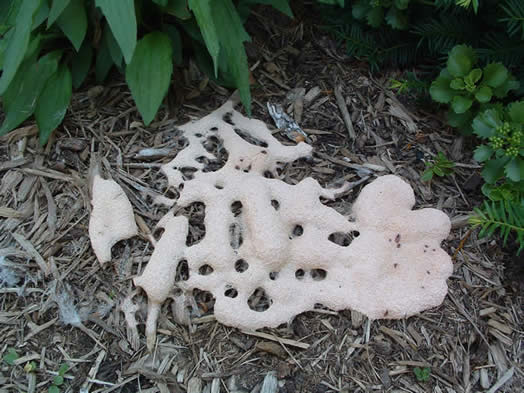What is Slime Mold and Where Does Slime Mold Come From?
What is slime mold? Where does slime mold come from? Many people have called and emailed us to ask about slime mold, to find out whether or not it will hurt their plants, and to learn how to prevent it from coming back.
 |
|
Slime Mold is harmless to your lawn or garden, and goes away eventually.
|
Have you noticed a fluorescent colored, foamy blob on the surface of your mulch that seemingly just appears and starts “growing?” This colorful organism is a slime mold, probably Fuligo septica, commonly known as scrambled egg slime or dog vomit fungus. Per Bob Polomski, Extension Consumer Horticulturist at Clemson University and the “Q & A guy” for Horticulture magazine, slime molds belong to an unusual class of organisms, myxomycetes, that exhibit both animal and plant-like behavior. Moist conditions prompt spores to germinate releasing amoeba-like cells. These evolve into a multicellular, giant, frothy-looking mass. This colorful slime can flow over mulch, sidewalks and even driveways in search of food (bacteria and other microorganisms). Scientists have discovered that it can move as much as two or more feet a day. It poses no threat to your landscape. Once it reaches its reproductive phase, it begins to dry out and develop mushroom-like fruiting bodies which burst, spreading more spores. As mentioned previously, it presents no threat to your plants, and left alone will eventually dry up and disappear. So, you do not have to do anything. However, if you are annoyed by its appearance and want to ensure it does not reach the stage where additional spores are spread via the wind, you can scoop it up and dispose of it or use a garden rake to break it up. Since this mold thrives in moist conditions, adjusting your irrigation so areas or periodically “fluffing” or “aerating” your mulch with a garden rake will help alleviate the conditions which cause it to develop.
